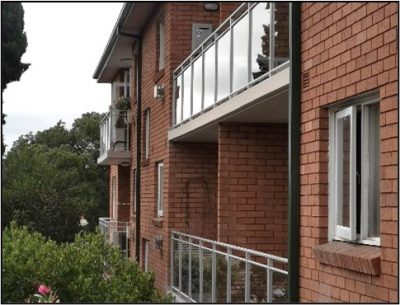Could invisible mould be the cause of your health issues? Persistent fatigue, frequently running or blocked nose, eye irritation, asthma, sinusitis, body aches and brain fog are some symptoms of toxic mould illness.
Mould is the result of persistent damp in buildings. Mould grows when fungal spores land on areas inside a building that has constant sources of moisture and high humidity. Mould growth will damage the structure of a building the longer it grows there.
Mould exposure doesn’t necessarily need to occur on a large scale. Individuals have been affected when the damage was small and not visible, for example a small leak from a pipe inside a wall.
The good news is that if you are concerned by damp or mould in your building, Everest Contracting are remedial builders who specialise in repairing damp issues for good.
Causes of persistent damp in buildings
- Water leaks
Mould only grows when there is sufficient moisture. When mould appears, the first task is to try to establish where the moisture is coming from.
Some causes include surface water leaking into the building, wet building foundations, including from rising damp, rain leaking in through the roof, walls, windows or doors – and indoor plumbing leaks.
- Poor ventilation
Common parts of a building that get wet or have poor ventilation are prone to mould growth, include kitchens where there is cooking without exhaust fans or open windows, bathrooms due to a build up of condensation – and laundries, where clothes dryers are not ventilated externally or from using clothes dryer racks or cupboards with restricted ventilation.
- Other causes of damp
If ventilation is not an issue, damp in your building may be caused by condensation, insufficient insulation, or rain seeping through the roof, storing large amounts of water absorbent materials, indoor liquid spills – or dense or heavy vegetation around your building.
Preventing mould
Indoor humidity levels should remain between 30 and 60 percent. A hygrometer which is sometimes incorporated with a thermometer or clock and is also displayed on portable dehumidifiers, will display the humidity level in your building.
There are some things that you can do to reduce humidity and help prevent mould in your building, including:
- Have a builder inspect your building for rising damp issues and leaks from the roof, walls, windows or doors and repair these issues
- Have water leaks repaired, such as failed waterproofing in wet areas and broken pipes
- If the area has been subject to flooding, it may be necessary to remove the wall lining (plaster) to allow for proper drying of the internal walls
- Use exhaust fans or open windows in the bathroom and kitchen when showering, cooking or using the dishwasher
- Vent clothes dryers externally.
Removing mould
Mould removal efforts should focus on removing pooled water or excessive moisture from the building as well as removing waterlogged items, followed by using a household cleaning solution then a disinfectant, while wearing protective clothing and a mask. Rooms should then be dried using fans and dehumidifiers.
Repair the problem
Contact Everest Contracting, remedial building specialists for strata and commercial buildings in Sydney. We are utilised by building consultants, strata managers and building managers to rectify water ingress, damp and mould issues.
Repairing water issues in buildings is the main service that we provide as remedial builders. Since our commencement in the building industry in 2006, we have remediated 700 building projects, with 75 percent of these involving water issue repairs.
When we are invited to inspect a building with water issues, we will:
- Inspect areas where surface water is leaking into the building
- Inspect building foundations moisture levels for the possibility of rising damp
- Inspect areas including roof, walls, windows and doors and balconies where water leaks have occurred
- Inspect indoor plumbing leaks
- Inspect bathrooms and kitchens for possible failed waterproofing.
Our team of builders, engineers, waterproofers and other tradespeople will identify the sources of water ingress and will determine the best solutions for your building.
Possible solutions may include:
- Removing failed waterproofing and installing more effective waterproofing systems, such as sheet membranes or negative and positive waterproofing systems
- Repairing the sources of water leaks, including damaged roofing, broken pipes and plumbing
- Installing ceiling or underfloor ventilation systems
- Injecting cracks in walls and foundations with acrylic, polyurethane, carbon fibre or resin based epoxy solutions.
In addition to repairing your building’s damp issues, our team of tradespeople can restore bathrooms, kitchens, balconies and install new joinery and rendered facades and paintwork.
The benefit of using our services is a complete solution, with polished finishes that will secure the future of your building for the years to come.
Contact us now to arrange an inspection of your building.






